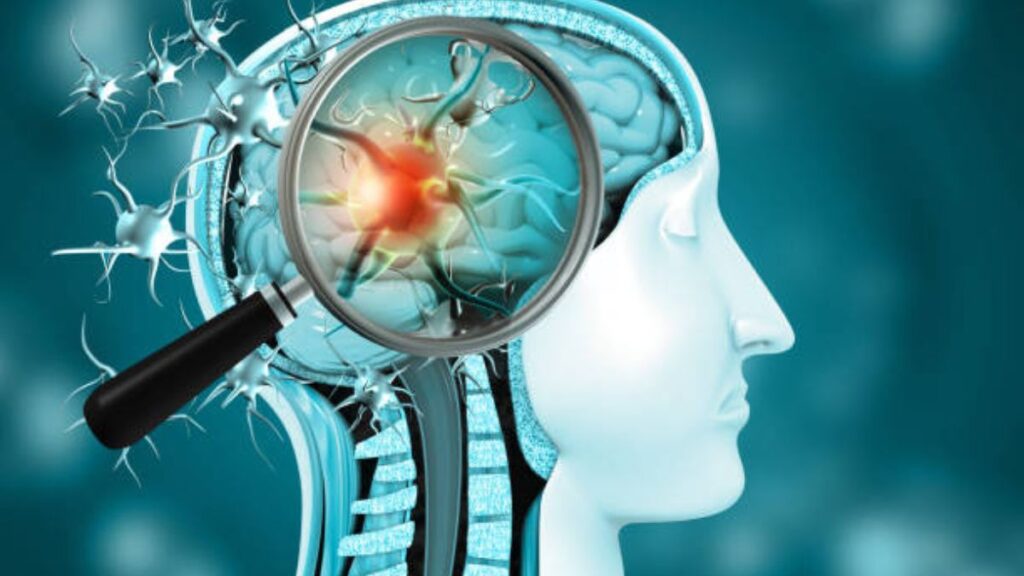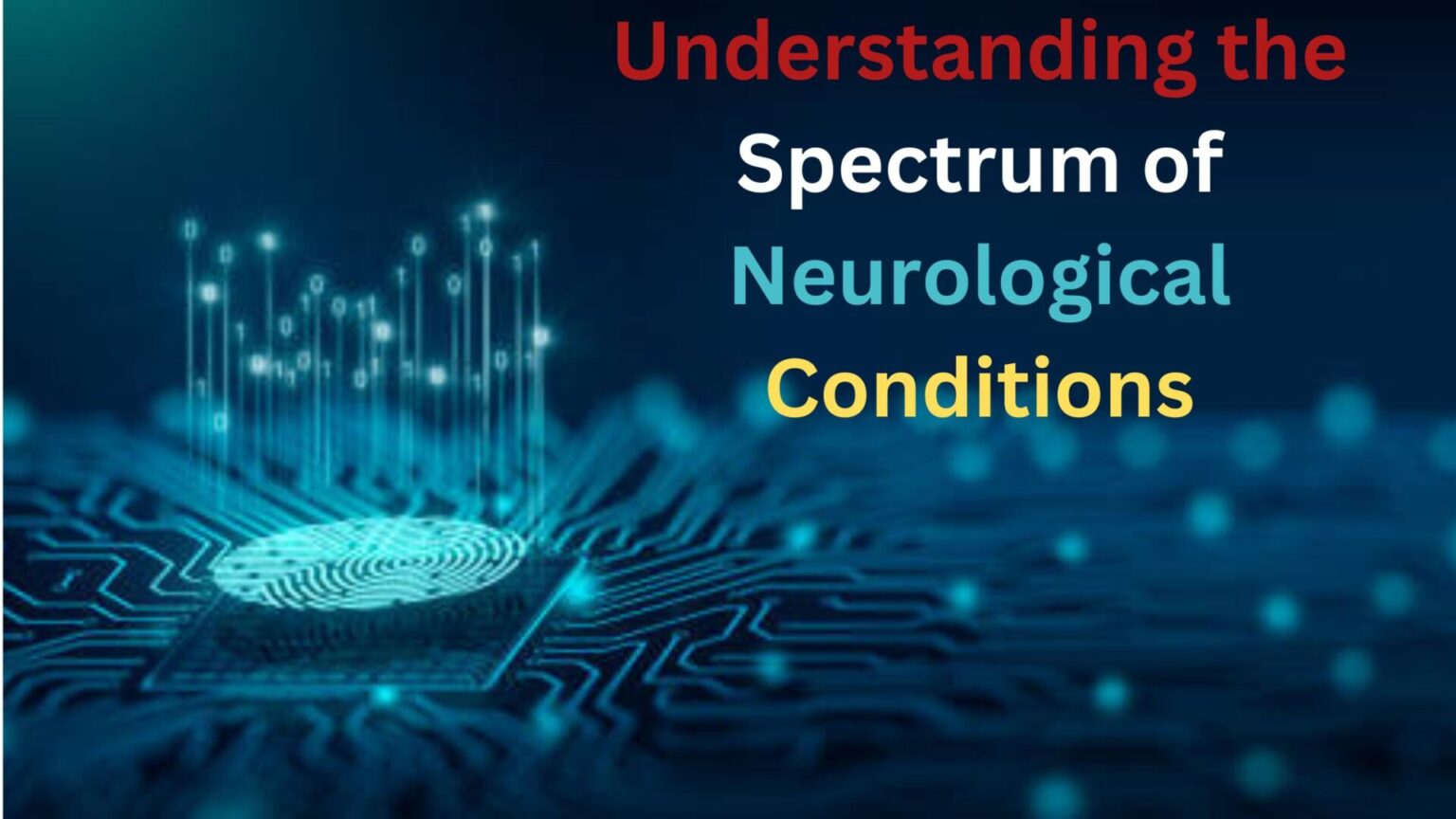Introduction:-
The Hidden Dangers: Understanding the Spectrum of Neurological Conditions

Neurological conditions encompass a vast array of disorders affecting the nervous system, ranging from common ones like migraines to rare diseases like Huntington’s. Despite their prevalence and impact on millions worldwide, many of these conditions remain poorly understood, often lurking beneath the surface, hidden from plain sight. In this article, we’ll delve into the hidden dangers of neurological conditions, shedding light on their spectrum, symptoms, and the challenges they pose to patients and healthcare providers alike.
Explain the Spectrum of Neurological Conditions?
he spectrum of neurological conditions encompasses a wide range of disorders that affect the brain, spinal cord, nerves, and muscles. These conditions vary greatly in their causes, symptoms, severity, and prognosis. Here’s an overview:
- Neurodevelopmental Disorders: These conditions typically manifest early in life and affect the development of the nervous system. Examples include:
- Autism spectrum disorders
- Intellectual disability
- Attention deficit hyperactivity disorder (ADHD)
- Developmental coordination disorder (dyspraxia)
- Neurodegenerative Disorders: These conditions involve the progressive degeneration of nerve cells, leading to functional decline over time. Examples include:
- Alzheimer’s disease
- Parkinson’s disease
- Huntington’s disease
- Amyotrophic lateral sclerosis (ALS)
- Multiple sclerosis (MS)
- Neuropsychiatric Disorders: These conditions involve disturbances in mood, thought, or behavior that have a neurological basis. Examples include:
- Depression
- Anxiety disorders
- Schizophrenia
- Bipolar disorder
- Obsessive-compulsive disorder (OCD)
- Epilepsy and Seizure Disorders: These conditions involve abnormal electrical activity in the brain, leading to seizures. Epilepsy is a chronic disorder characterized by recurrent seizures, while seizure disorders may have various underlying causes.
- Stroke and Vascular Disorders: These conditions involve disruptions in blood flow to the brain, leading to brain damage. Types of strokes include ischemic strokes (caused by blocked blood vessels) and hemorrhagic strokes (caused by bleeding in the brain).
- Neuromuscular Disorders: These conditions affect the nerves that control voluntary muscles, leading to weakness, muscle wasting, and other symptoms. Examples include:
- Muscular dystrophy
- Myasthenia gravis
- Charcot-Marie-Tooth disease
- Spinal muscular atrophy
- Headache and Pain Disorders: These conditions involve chronic or recurrent pain that originates from the nervous system. Examples include:
- Migraine headaches
- Cluster headaches
- Trigeminal neuralgia
- Fibromyalgia
- Movement Disorders: These conditions involve abnormalities in movement control, leading to involuntary movements, tremors, or difficulties with coordination. Examples include:
- Essential tremor
- Dystonia
- Tourette syndrome
- Restless legs syndrome
- Peripheral Neuropathies: These conditions involve damage to the peripheral nerves, leading to symptoms such as numbness, tingling, weakness, and pain. Examples include:
- Diabetic neuropathy
- Guillain-Barré syndrome
- Peripheral neuropathy associated with vitamin deficiencies or toxic exposures
- Traumatic Brain and Spinal Cord Injuries: These conditions result from physical trauma to the brain or spinal cord, leading to neurological deficits. Symptoms vary depending on the location and severity of the injury.
This spectrum of neurological conditions highlights the complexity and diversity of disorders affecting the nervous system, each requiring specialized diagnosis and management approaches.
How are neurological conditions diagnosed?
Neurological conditions are diagnosed through a combination of medical history, physical examination, and various diagnostic tests. Here’s an overview:

- Medical History: The doctor will ask detailed questions about symptoms, their duration, severity, and any factors that worsen or alleviate them. They may also inquire about family history, past medical conditions, and medications.
- Physical Examination: A thorough neurological examination is conducted to assess reflexes, muscle strength, coordination, sensation, and other neurological functions. This examination helps in localizing the problem within the nervous system.
- Diagnostic Tests:
- Imaging Tests: Techniques like MRI (Magnetic Resonance Imaging) and CT (Computed Tomography) scans provide detailed images of the brain and spinal cord, helping to identify structural abnormalities like tumors, strokes, or multiple sclerosis plaques.
- Electrodiagnostic Tests: Electroencephalography (EEG) records electrical activity in the brain, useful for diagnosing epilepsy and other seizure disorders. Electromyography (EMG) assesses muscle and nerve function, aiding in diagnosing conditions like neuropathy or muscle disorders.
- Blood Tests: Blood tests can reveal abnormalities such as infections, autoimmune disorders, or metabolic imbalances that may affect the nervous system.
- Lumbar Puncture (Spinal Tap): This involves collecting cerebrospinal fluid from the spinal canal for analysis. It can detect infections, inflammation, and certain neurological conditions like multiple sclerosis.
- Genetic Testing: In cases where a genetic component is suspected, genetic tests can identify specific mutations associated with neurological disorders like Huntington’s disease or certain types of epilepsy.
- Neuropsychological Testing: These tests evaluate cognitive function, memory, language, and other aspects of brain function. They are particularly helpful in diagnosing conditions like dementia or traumatic brain injury.
- Biopsy: In some cases, a biopsy may be necessary to obtain a sample of tissue for analysis, particularly if a tumor or inflammatory condition is suspected.
- Functional Tests: These tests assess specific functions affected by the neurological condition, such as balance tests for vestibular disorders or gait analysis for movement disorders like Parkinson’s disease.
The combination of these approaches helps healthcare professionals make an accurate diagnosis and develop an appropriate treatment plan for neurological conditions.
What are the latest advancements in treating neurological conditions?
Here are some of the latest developments:

- Precision Medicine: Advances in genetics and molecular biology have led to the development of personalized treatment approaches for neurological disorders. This involves identifying genetic markers or biomarkers that can help predict a patient’s response to certain medications or therapies, allowing for more targeted and effective treatments.
- Gene Therapy: Gene therapy holds promise for treating certain neurological conditions caused by genetic mutations. Techniques such as CRISPR-Cas9 gene editing offer the potential to correct genetic defects underlying disorders like Huntington’s disease, spinal muscular atrophy, and certain types of inherited epilepsy.
- Stem Cell Therapy: Stem cell research continues to explore the potential of using stem cells to repair or regenerate damaged neural tissue. Clinical trials are underway to investigate the use of stem cell therapies for conditions such as Parkinson’s disease, spinal cord injury, and stroke.
- Neuromodulation: Advances in neuromodulation techniques, such as deep brain stimulation (DBS), transcranial magnetic stimulation (TMS), and spinal cord stimulation (SCS), offer new options for treating neurological disorders. These techniques involve delivering electrical or magnetic stimulation to specific areas of the nervous system to modulate neural activity and alleviate symptoms.
- Immunotherapy: Immunotherapy approaches, including monoclonal antibodies and immune checkpoint inhibitors, are being investigated for their potential to treat autoimmune neurological disorders such as multiple sclerosis and neuromyelitis optica.
- Drug Repurposing: Researchers are exploring the repurposing of existing medications for the treatment of neurological conditions. By identifying drugs that have already been approved for other indications but may also have therapeutic effects on neurological disorders, researchers can expedite the drug development process and potentially offer new treatment options more quickly.
- Digital Health and Telemedicine: Digital health technologies, including mobile apps, wearable devices, and telemedicine platforms, are increasingly being used to monitor patients with neurological conditions, deliver remote care, and collect real-time data for research and treatment optimization.
- Neuroprosthetics and Brain-Computer Interfaces (BCIs): Advances in neuroprosthetics and BCIs offer new opportunities for restoring lost neurological function in conditions such as paralysis and limb loss. These technologies enable direct communication between the brain and external devices, allowing individuals to control prosthetic limbs or interact with computers using their thoughts.
- Neuroplasticity-Based Therapies: Therapeutic approaches that harness the brain’s ability to reorganize and adapt in response to injury or disease are being explored for various neurological conditions. Techniques such as constraint-induced movement therapy and cognitive rehabilitation aim to promote neuroplasticity and improve functional outcomes in conditions such as stroke and traumatic brain injury.
These advancements represent exciting progress in the field of neurology and offer hope for improved outcomes and quality of life for individuals living with neurological conditions. Ongoing research and innovation continue to drive further developments in diagnosis, treatment, and management strategies.
Conclusion:
Neurological conditions represent a broad spectrum of disorders that profoundly impact the lives of millions worldwide. Despite their prevalence, many of these conditions remain hidden from public awareness and understanding. By increasing awareness, advocating for research, and providing support for individuals affected by neurological conditions, we can work towards improving diagnosis, treatment, and quality of life for patients and their families. Let’s shine a light on the hidden dangers of neurological conditions and strive for a world where everyone receives the care and support they need.
FAQs:
- What are neurological conditions?
Neurological conditions are disorders that affect the brain, spinal cord, and nerves throughout the body. They can manifest in various ways, including movement disorders, cognitive impairments, sensory disturbances, and more.
- What are some common neurological conditions?
Common neurological conditions include migraines, Alzheimer’s disease, Parkinson’s disease, epilepsy, multiple sclerosis, and stroke. However, numerous other less-known conditions fall under this category.
- What causes neurological conditions?
Neurological conditions can have diverse causes, including genetic factors, environmental influences, infections, autoimmune reactions, traumatic injuries, and degenerative processes. In many cases, the exact cause remains unknown.
References:
- World Health Organization (WHO) – Neurological Disorders: Public Health Challenges.
- National Institute of Neurological Disorders and Stroke (NINDS) – Neurological Disorders.
- The Lancet Neurology – Global, regional, and national burden of neurological disorders, 1990–2016: a systematic analysis for the Global Burden of Disease Study 2016.
- American Academy of Neurology (AAN) – Neurology Patient Pages.
- Mayo Clinic – Neurological Diseases and Disorders.






